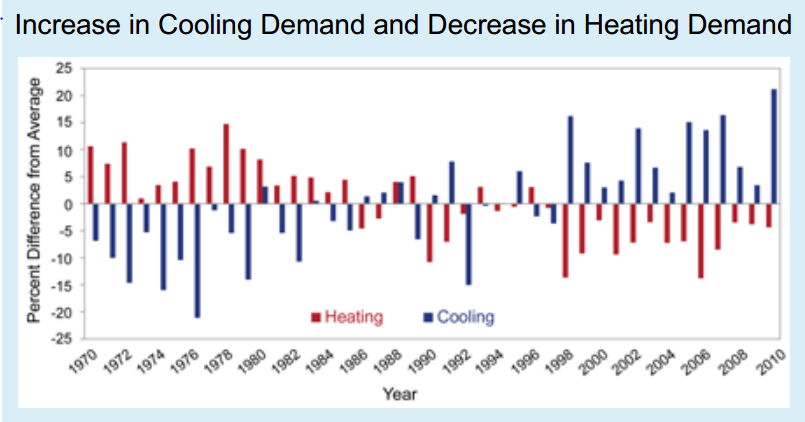On May 6th, the U.S. Global Change Research Program (USGCRP) released its Third National Climate Assessment (NCA) report, the largest and most comprehensive U.S. climate assessment to date. Pursuant to the Global Change Research Act of 1990, Congress requires the USGCRP to prepare an assessment on the latest findings in climate change research, and how various U.S. regions and sectors will be impacted by further changes to the climate system. This report was guided by 60 members of the National Climate Assessment and Development Advisory Committee and compiles research from more than 300 scientists and climate change experts.
The NCA reports several findings about climate change’s current and potential impact on the nation. The report determines that the U.S. has experienced the effects of global climate change, most of which has been induced by human activities, namely fossil fuel burning, over the last 50 years. The climate will continue to change as human activities continue to emit more greenhouse gases, causing more extreme climate and weather events that can be detrimental across regions and sectors of the U.S. Further adaptation and mitigation efforts are needed in order to reduce future social, environmental, and economic costs.
So how does climate change affect the U.S. energy sector, and vice versa? The assessment finds that changes to the climate system will significantly impact the way people produce and use energy. More frequent and extreme weather events will threaten energy infrastructure across all geographic regions. Major storm surges can harm oil and gas production in offshore sites and destroy nuclear power plants in coastal regions, while tornadoes can severely damage power stations and transmission lines in inland regions. Additionally, the type of energy available for production will change as water supplies become more constrained in certain regions. Changes in energy consumption will be most greatly impacted by increases in average surface temperatures. As summers get hotter, electricity demand for cooling will rise, while more mild winters will reduce natural gas and oil demand used for heating.

Source: National Climate Assessment, USGCRP
Just as changes to the global climate can have strong impacts on our supply of and demand for energy, the type of energy we produce and the amount of energy we consume can significantly determine the future impacts of climate change. While today’s fossil fuel-dominated energy mix and high per capita energy consumption has accelerated the impacts of climate change, tomorrow’s energy landscape has the potential to reduce its effects. In 2013, more than five gigawatts (GW) of electrical generating capacity added in the U.S. came from renewable energy sources, which is three times more than the added capacity provided by coal, oil, and nuclear power combined. Thanks to codes and standards, buildings, cars, and appliances have all become more energy-efficient, requiring a fraction of the energy they once did to provide the same services. Increased uptake of demand-side management practices, like demand-response, can shift or reduce energy use during peak times. Continued innovation and support for energy policy can maintain these trends and transition the energy sector from a climate change contributor to a climate change combater.
